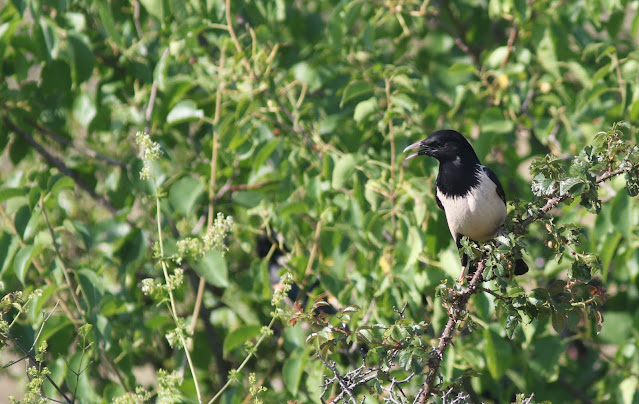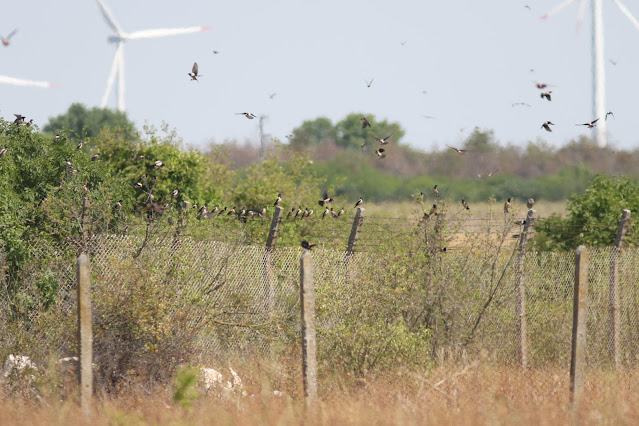Today 5th July I did the moth trap at the project site at dawn and then headed over to Cape Kaliakra to meet Dimiter. Obviously not a lot migrating this time of year at this famous migration hotspot, just a few Mediterranean Gulls moving around. In contrast to just a few weeks ago when I was last here there were no Yelkouan Shearwaters, the birds have moved out of the Black Sea now (where many spend the non-breeding season) and have gone to their summer breeding grounds in the Mediterranean via the Bosporus and the Sea of Marmara. Also no sign of any Black-throated Divers or Black-necked Grebes which were congregating here up until early May at least.
As we were leaving the Cape we noticed a few Rosy Starling feeding in the Steppe. I was hoping to see this species on this visit as I generally visit earlier in the Spring before they arrive in the region. Typically Rosy Starlings arrive in Bulgaria from around 10th May and some years they arrive in numbers and set up nomadic breeding colonies in places like quarries and cliff faces. In good years there can be several colonies, sometimes large ones involving hundreds (even thousands) of pairs but in other years there may be no colonies at all. The last time a colony was present at Cape Kaliakra was 2018 and before then there have been long gaps so the situation is a sporadic and unpredictable one, typical of this nomadic species. The nomadism is dependent on the availability of grasshoppers/locust to feed their young, with groups moving around in early May to search for suitable breeding areas and colonies appearing by early June if suitable areas are found. It's this nomadism that leads to birds pushing further west when environmental conditions are such, where they seem to be appearing with increasing frequency in Western Europe. The first one for the Azores was recorded in June 2020 representing the furthest west this species has reached.
Anyway with this in mind, we decided (thanks to Dimiter's expertise on this matter) to follow the direction the birds were moving in which eventually took us to the coastline where eventually we did indeed discover a breeding colony on the cliffs. The colony had in fact already been found by local ornithologists (they estimate about 500 pairs) who requested we do not circulate the news widely until the young birds had fledged to prevent any un-necessary disturbance so we agreed to wait a week or so (I'm writing this a week later) and indeed the young have now fledged (see a later post). Here's a few photos from before the young were out. We also had Roller, Hobby and Long-legged Buzzards quartering the colony looking like they might be hunting the Starlings.








No comments:
Post a Comment